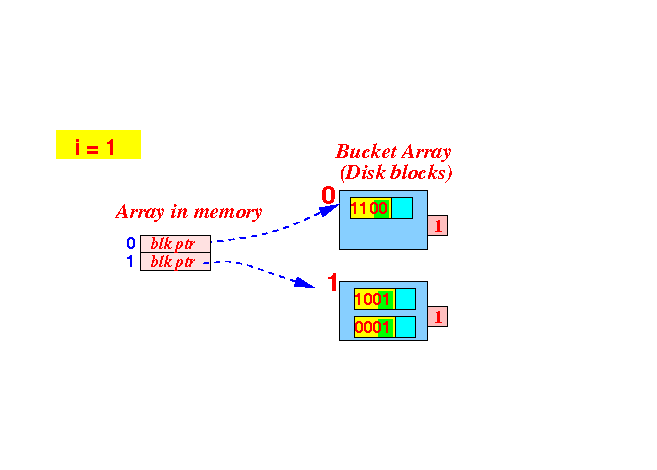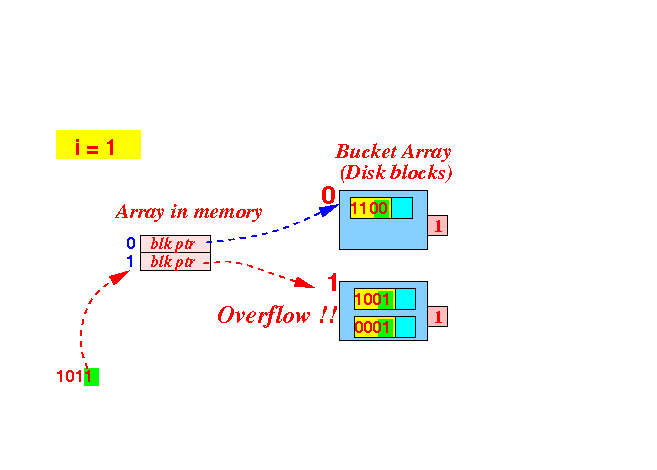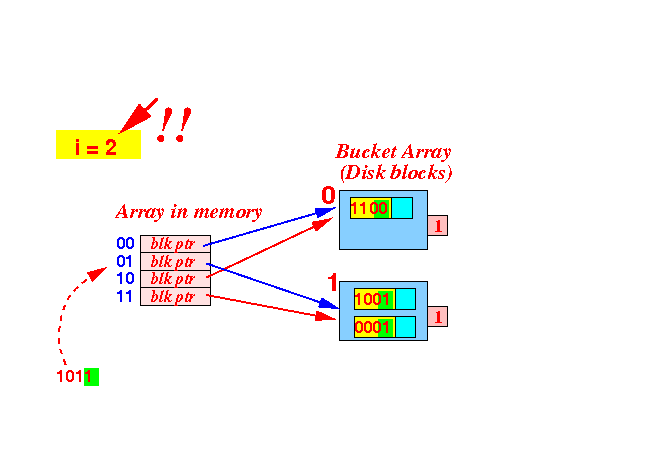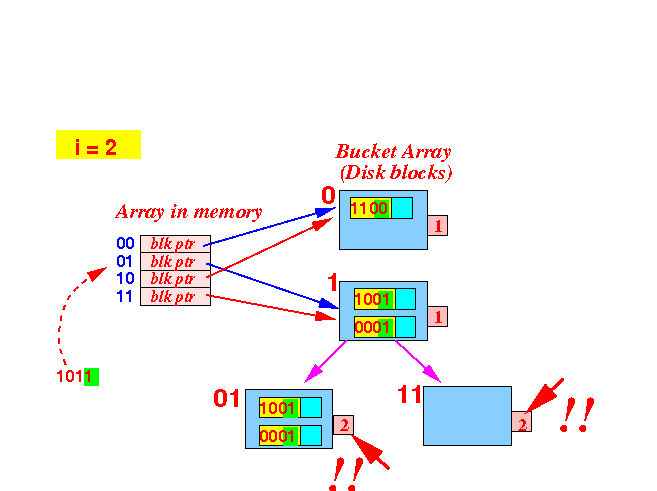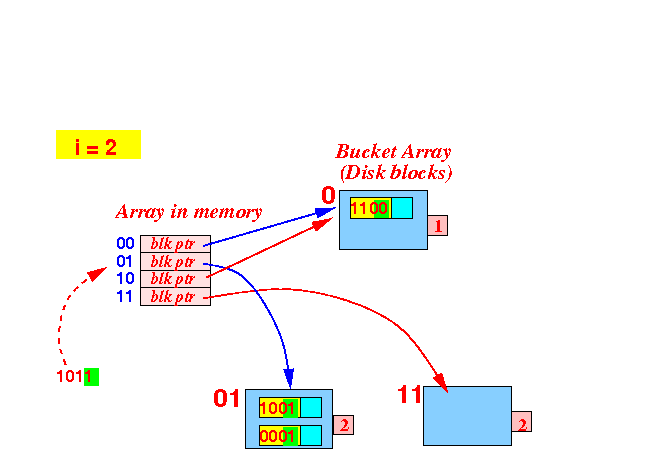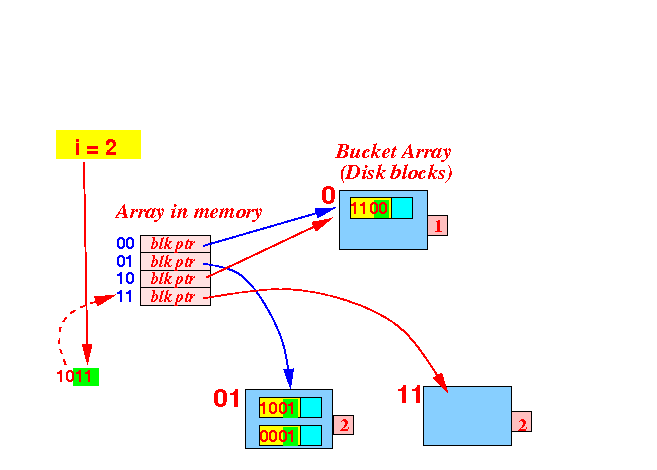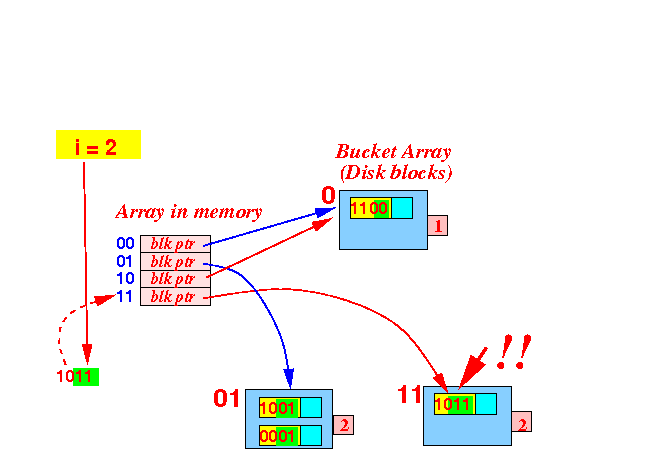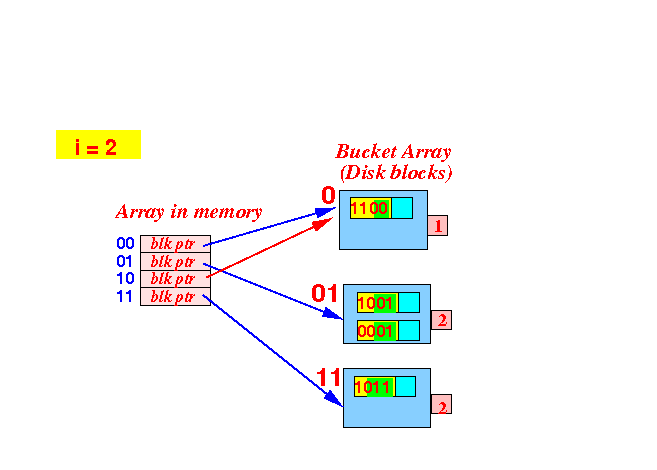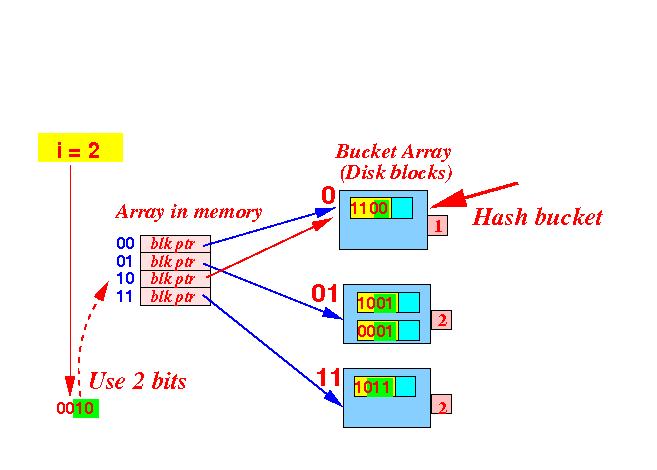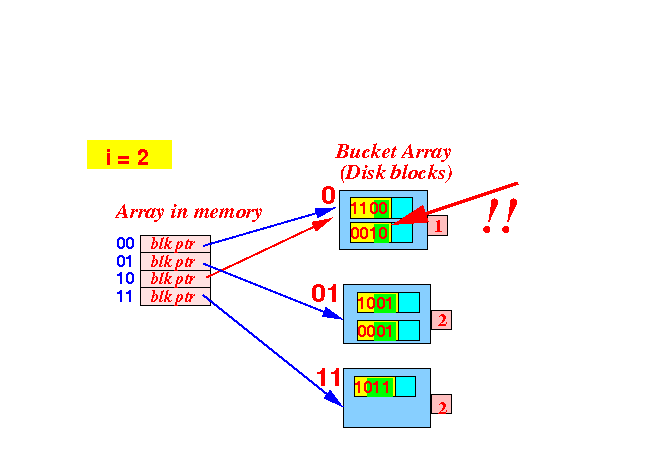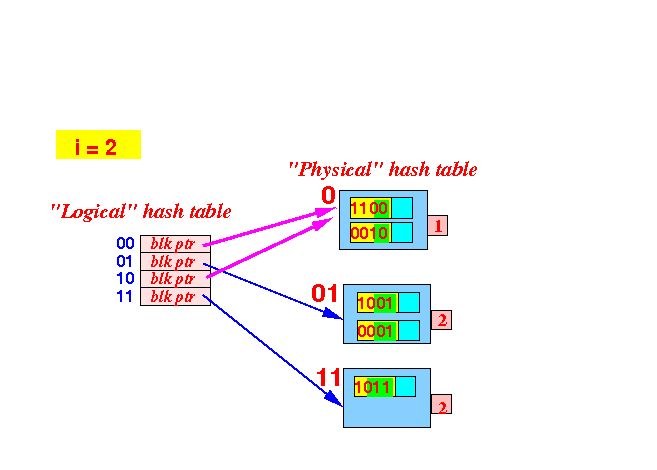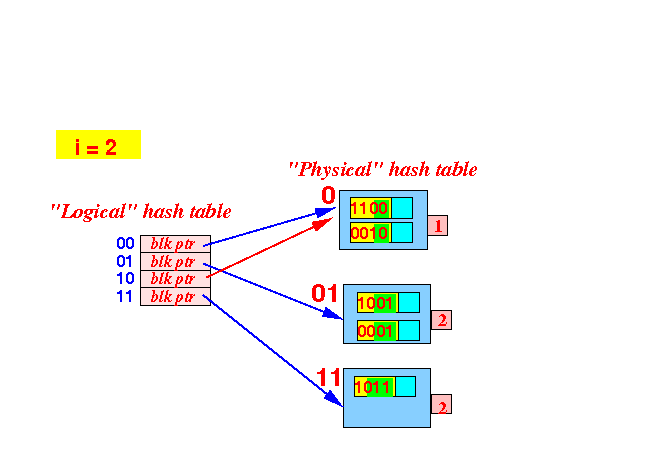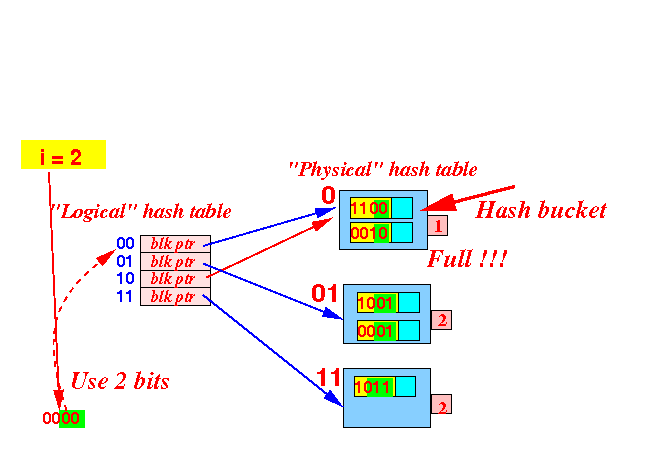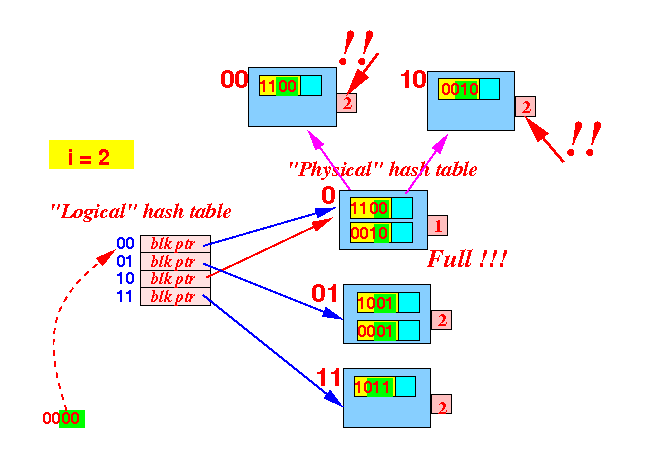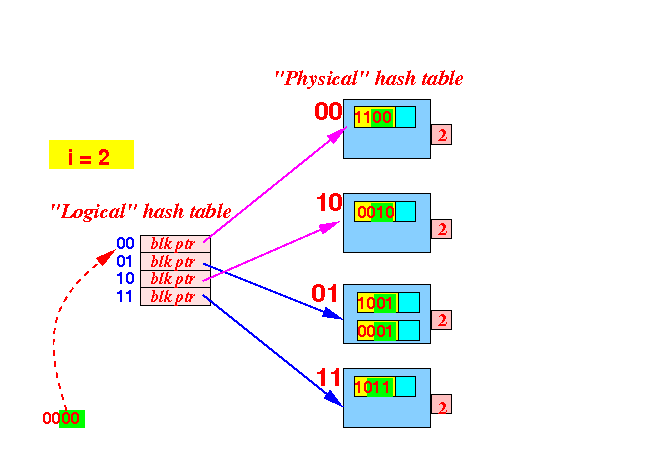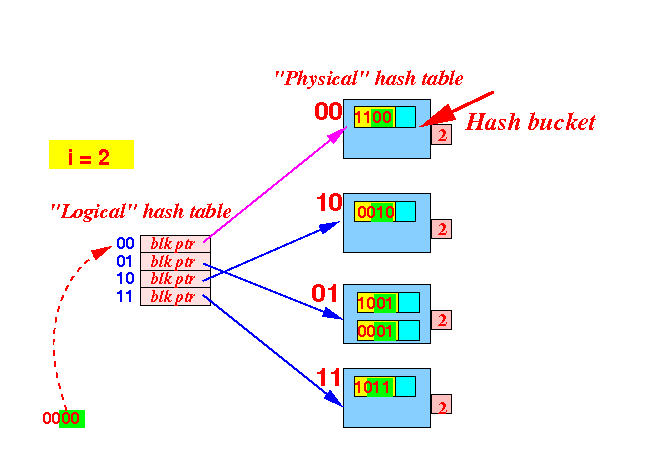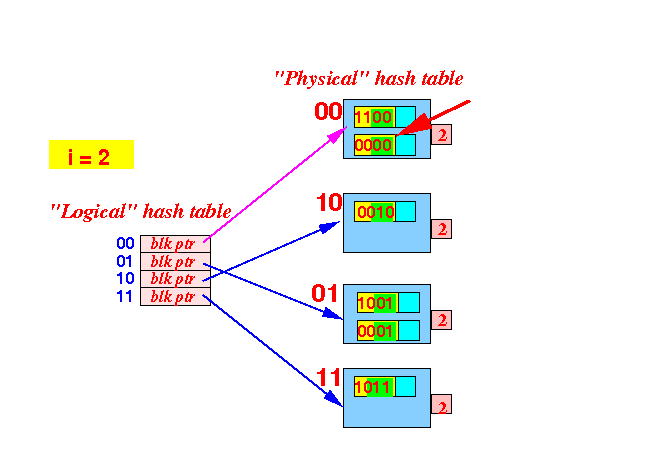Slideshow:
- Examples:
Extensible Hashing
- Initial State:
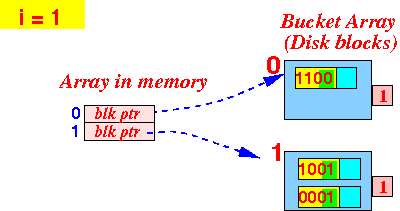
- Insert a record
X such that:
h(X) = 0101:

Bucket 1 is full !!!
- Because
i == i' :
- Double the logical hash table
Result:

- Re-hash
all keys in
the full bucket "1" into
buckets "01" and "11"
using 2 bits (because i' = 1) in
RandomNum:
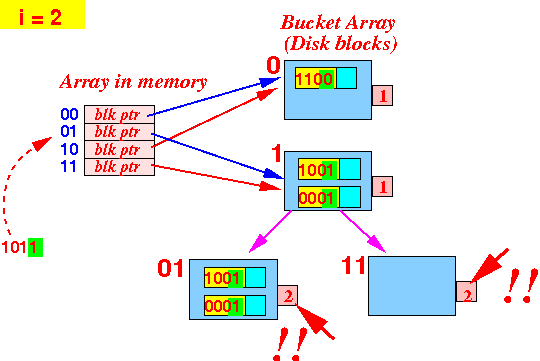
- Adjust
the Bucket[01]
and Bucket[11]:
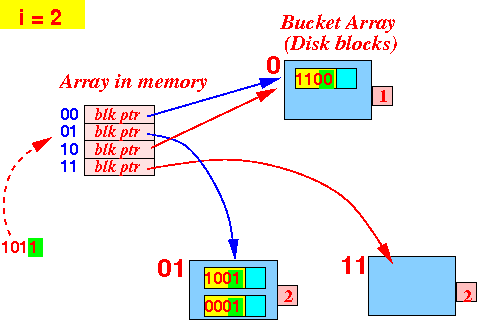
- Insert the
key
again ---
now using
i = 2:
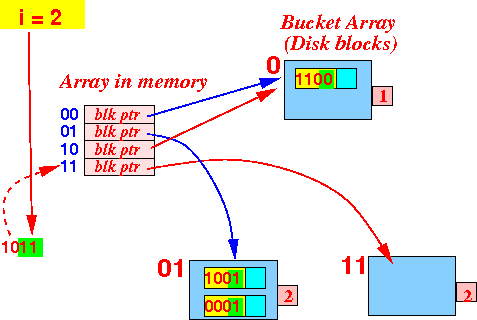
Result:

- Initial State:
- Example continued:
Insert a record
X
such that:
h(X) = 0010:
- Initial State:

- Inserting a record
X
such that:
h(X) = 0010:
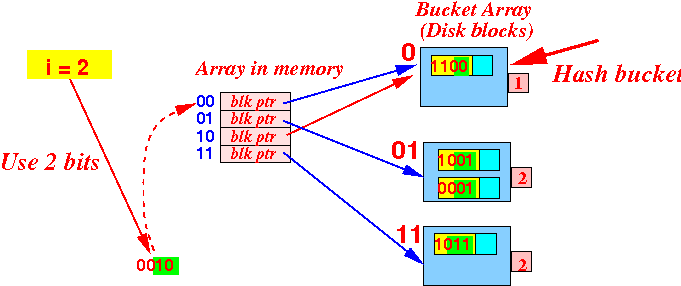
Result:
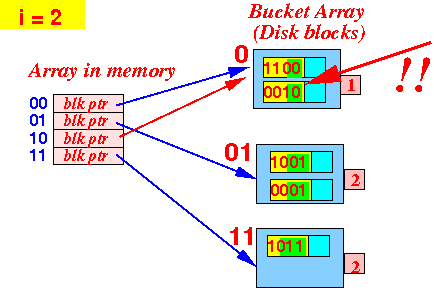
Note:
- Hash values
ending in
xxxxxxx00 xxxxxxx10will both hash into the same physical hash bucket !!!
- That's because
both logical hash buckets
bucket[00] and
bucket[01] are
mapped to the
same physical hash bucket
!!!

- Initial State:
- Example continued:
Insert a record
X
such that:
h(X) = 0000:
- Initial State:
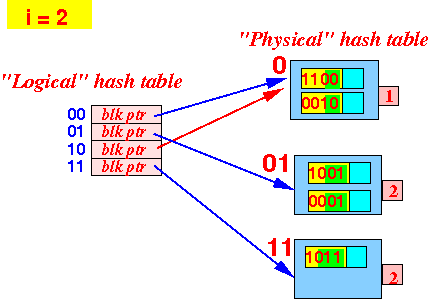
- Inserting a record
X
such that:
h(X) = 0000:
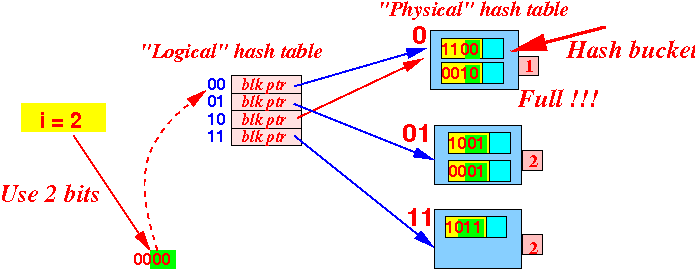
- Because:
i > i'
- We do not need to double the logical hash table !!!
-
Re-hash
all keys in
the full bucket "0" into
buckets "00" and "01"
using 2 bits (because i' = 1) in
RandomNum:
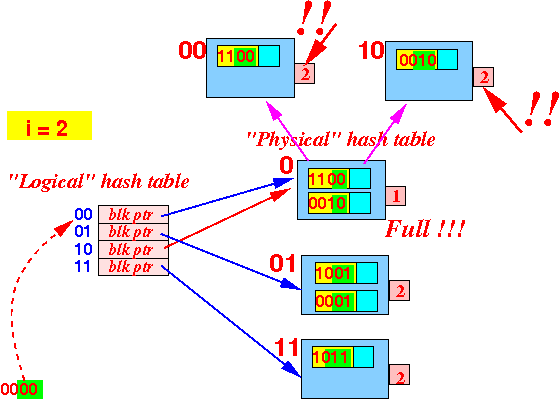
Adjust the Bucket[ ]:
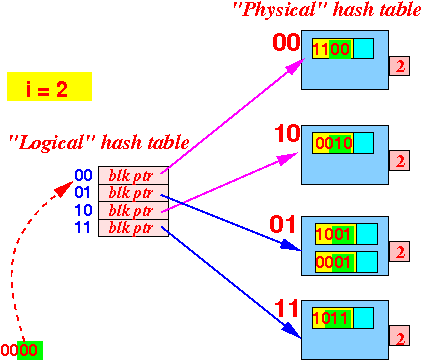
- Insert again using the
new configuration:
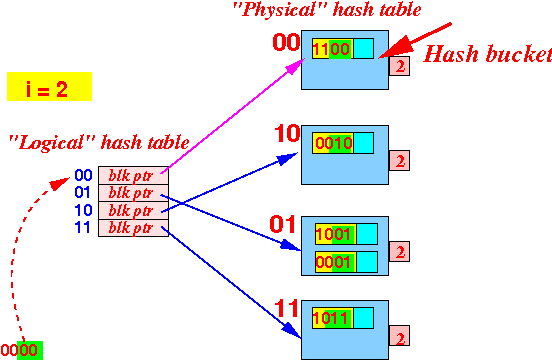
Result:
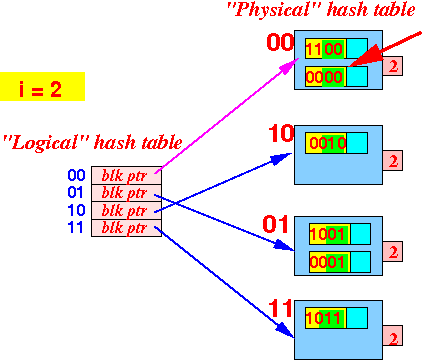
- Initial State:
